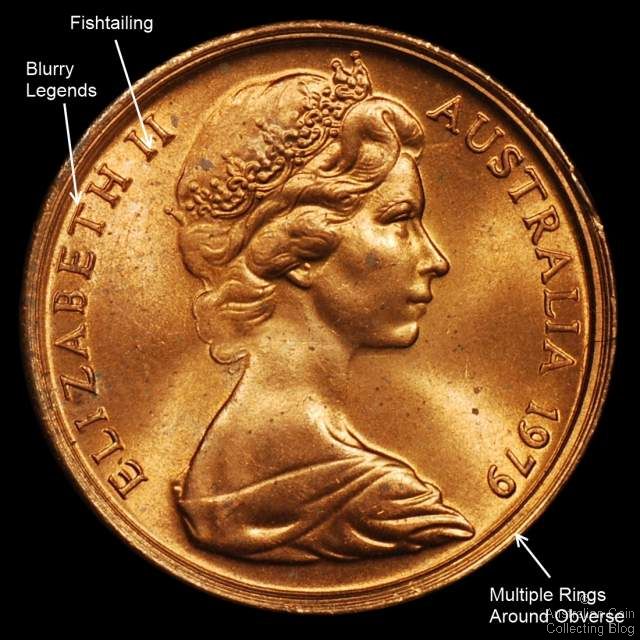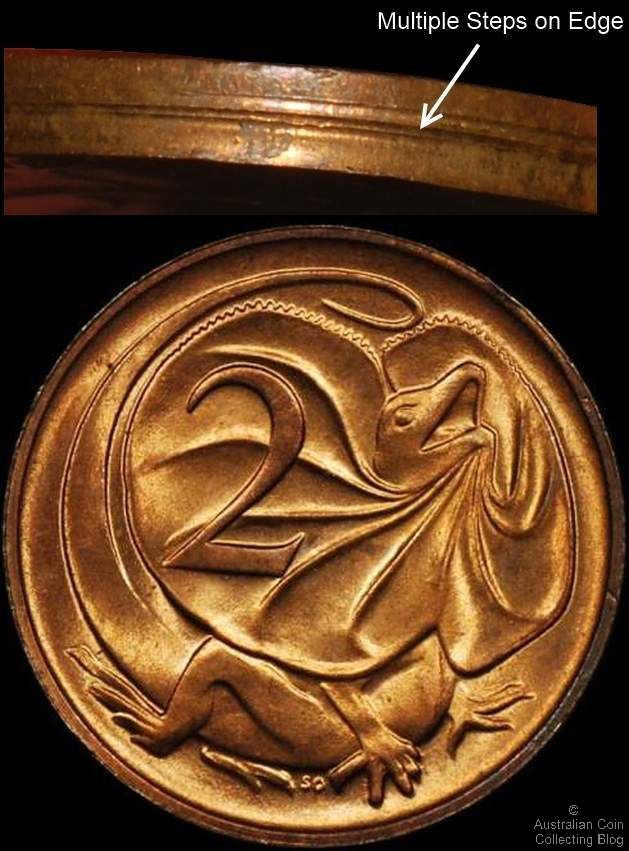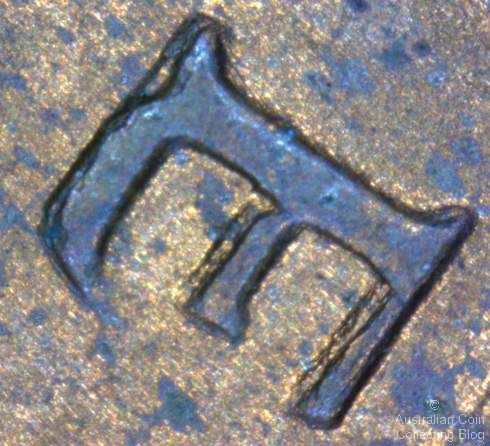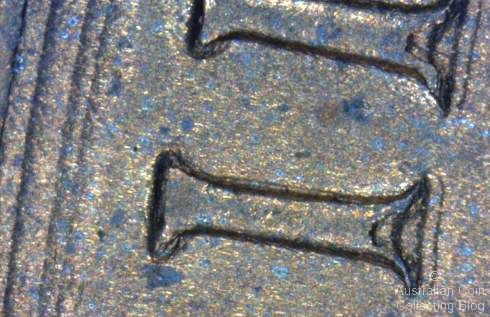Written by The Australian Coin Collecting Blog published in May 2013 Australasian Coin and Banknote Magazine.

Figure 1
Discovered by a bank teller in the late 1970s and put aside as something unusual, the coin shown in Figures 1 and 2 is a superb high grade brilliant red 1979 2c piece. This coin was recently purchased from an antique dealer as a partial collar error but there's more here than meets the eye.
The coin edge (Figure 3) is where the most obvious deformity lies with a step in the edge showing where the collar was engaged and where it wasn't. As is typical for a partial collar error the side of the coin that was not engaged with the collar die at the time of striking has a slightly bigger diameter than the side of the coin that was. In this case the diameter of the obverse is larger because the flan spread outwards in this area when it was struck as it was not restrained by the collar. If you look closer at the edge of this coin it's apparent that there's more than one step, which suggests this coin is something more than a partial collar error.

Figure 2 (bottom) and 3 (top)
Examination of the reverse of the coin (Figure 2) shows nothing of particular interest other than it being beautifully struck up. Even under a microscope there's nothing out of the ordinary to see. It's worth noting that the reverse of the coin (which was restrained by the collar) was struck by the anvil die or fixed bottom die. Close perusal of the obverse however paints a vastly different picture. Firstly, as shown in Figure 1 there are multiple rings near the rim around the obverse of the coin. Secondly, under a loupe some of the legends appear ever so slightly blurred and there's fishtailing evident on some of the letters.
It's not until we look at the obverse of the coin under a microscope that what's happened with this coin becomes more evident. Most of the obverse lettering shows evidence of radial metal flow or fishtailing. This is prominent in Figure 4 where the vertical stroke of the E has flowed outwards as indicated by the thinning of the horizontal strokes of the letter where they join the vertical stroke. Even more interestingly there's obvious proof that some of the letters have been struck more than once! Figure 5 shows the two II's of Elizabeth II have been struck multiple times. They also show radial metal flow with fishtails at the bottom of each letter. So what's going on here? The multiple steps on the coin edge suggest the coin has been struck a number of times, maybe up to 4 times. This is proven by the multiple rings around the obverse of the coin, the radial metal flow of the legends and clear visual evidence that the obverse legends have been
struck more than once.

Figure 4
Here are our thoughts on how this interesting error coin came into existence. On the first strike, the coin only partially engaged with the collar and furthermore the coin must have jammed tightly in the press (collar). It was then struck again, and because it was jammed in the press so tightly there was no movement or rotation of the coin. With the obverse not being constrained by the collar the coin metal flowed outwards with each strike. The result of this is clear with obvious fishtailing, radial metal flow and multiple strikes as well as the rings near the rims.
The coin is a lovely grade, rescued by our helpful bank teller before entering circulation but the coin does have some rim damage. It's likely this occurred because the coin was jammed in the press which shut itself down in a fault condition and a minting technician used a tool to dislodge the coin and then restarted the press. Typically a multiple struck coin would appear more spectacular than this one, especially if it rotated or moved between strikes but we'll take this one as a fantastic new addition to our error collection.

Figure 5
Acknowledgements
Thanks to Matthew Browne.
Posted by harrisk at July 8, 2013 3:33 PM
Subscribe to our Newsletter


